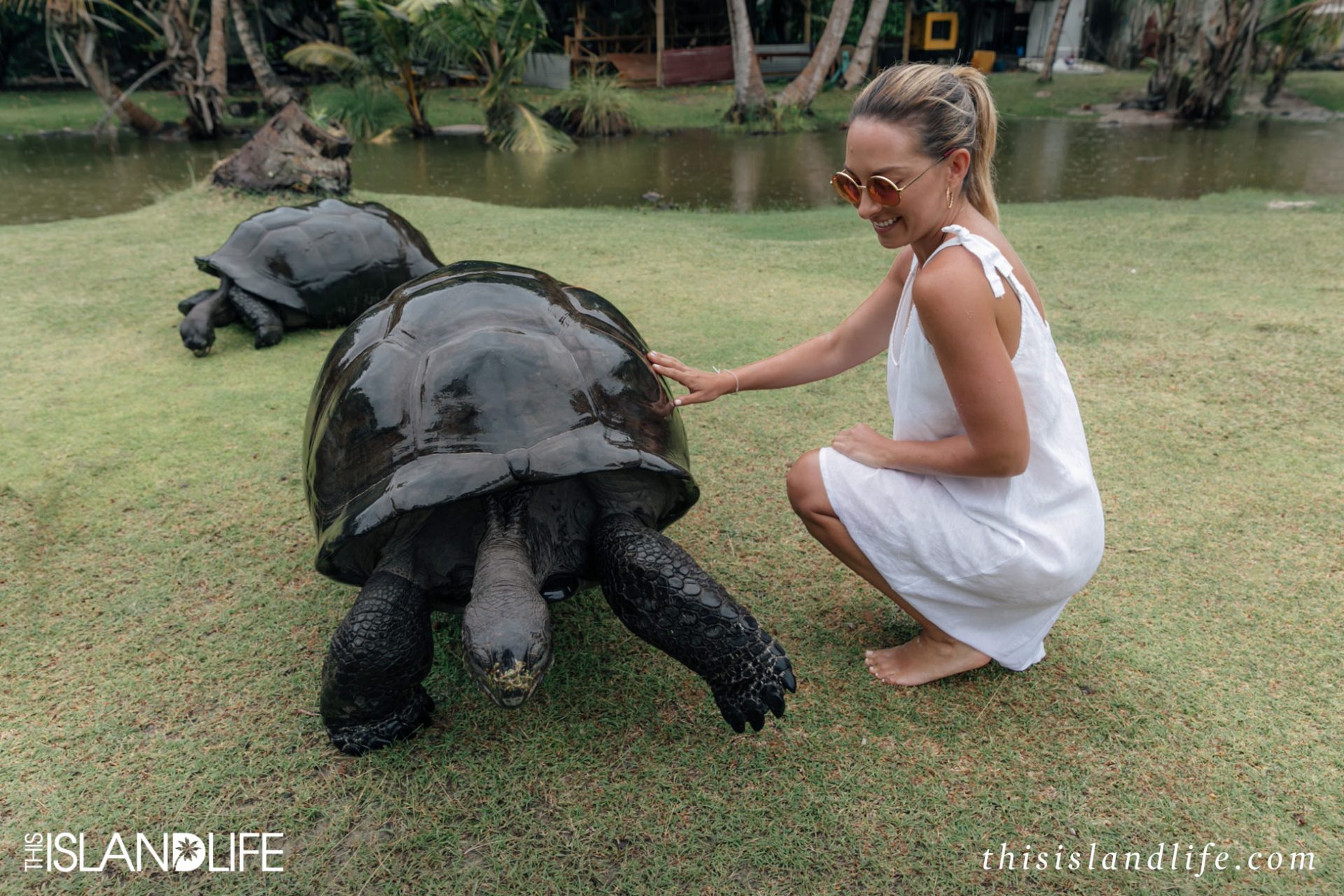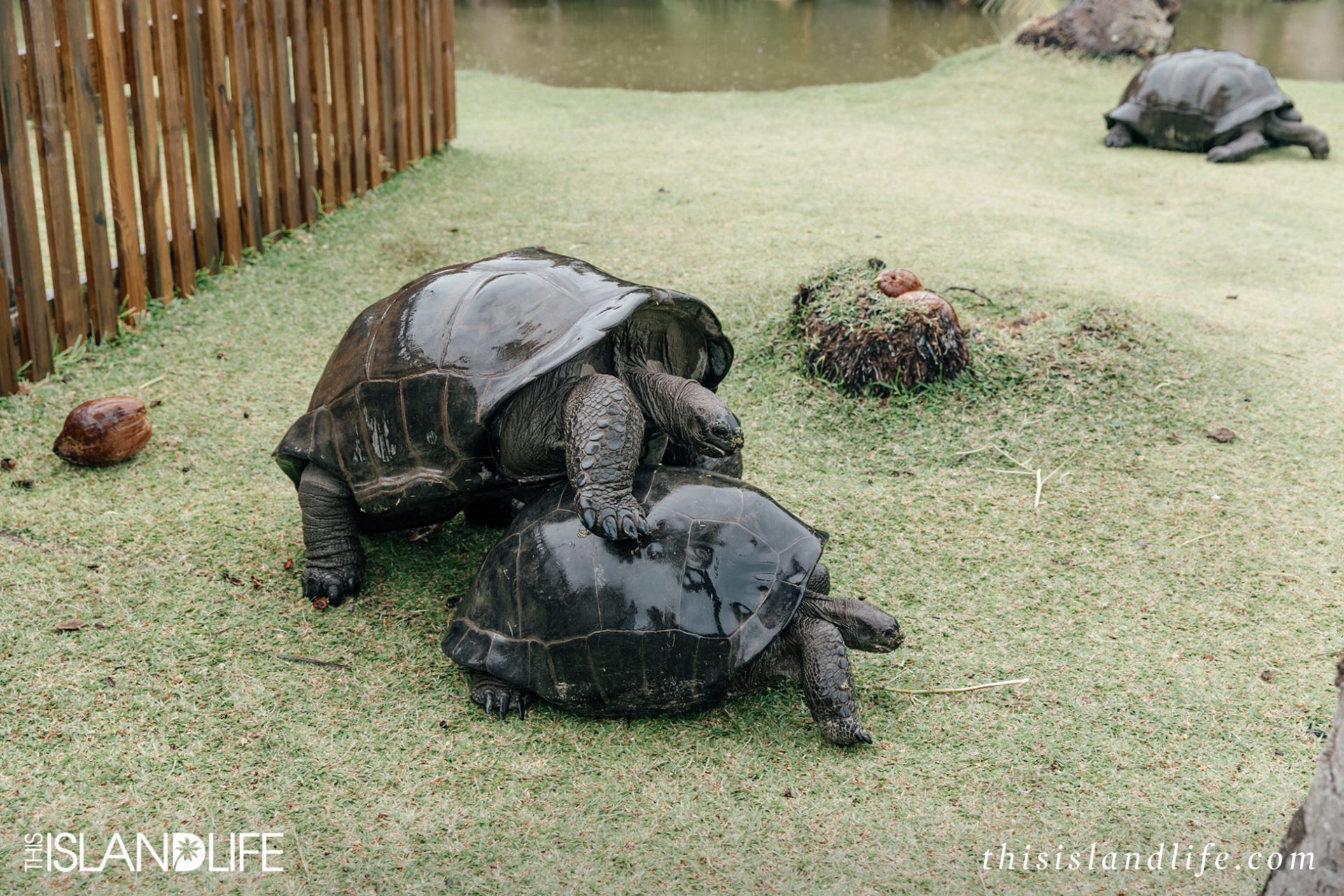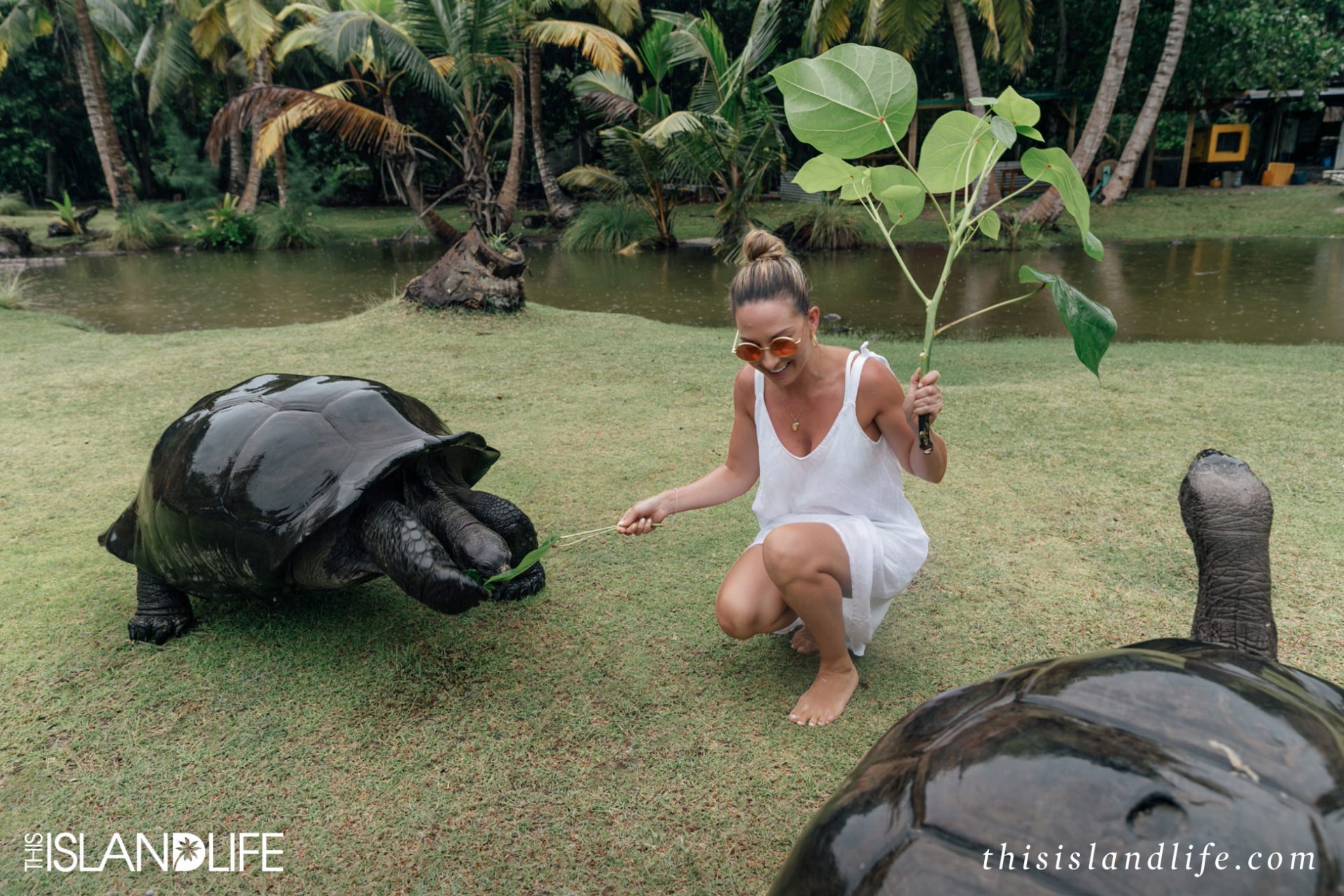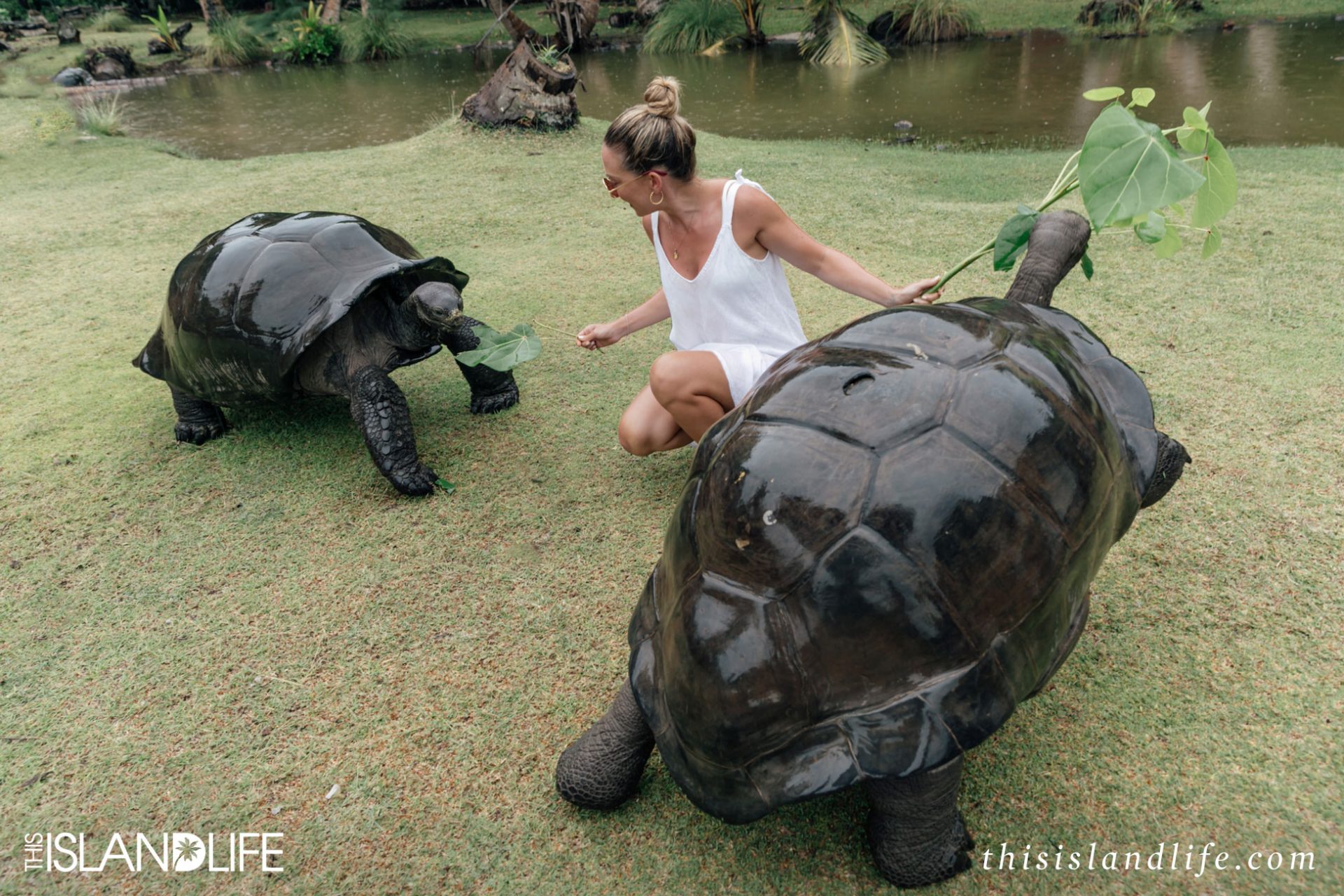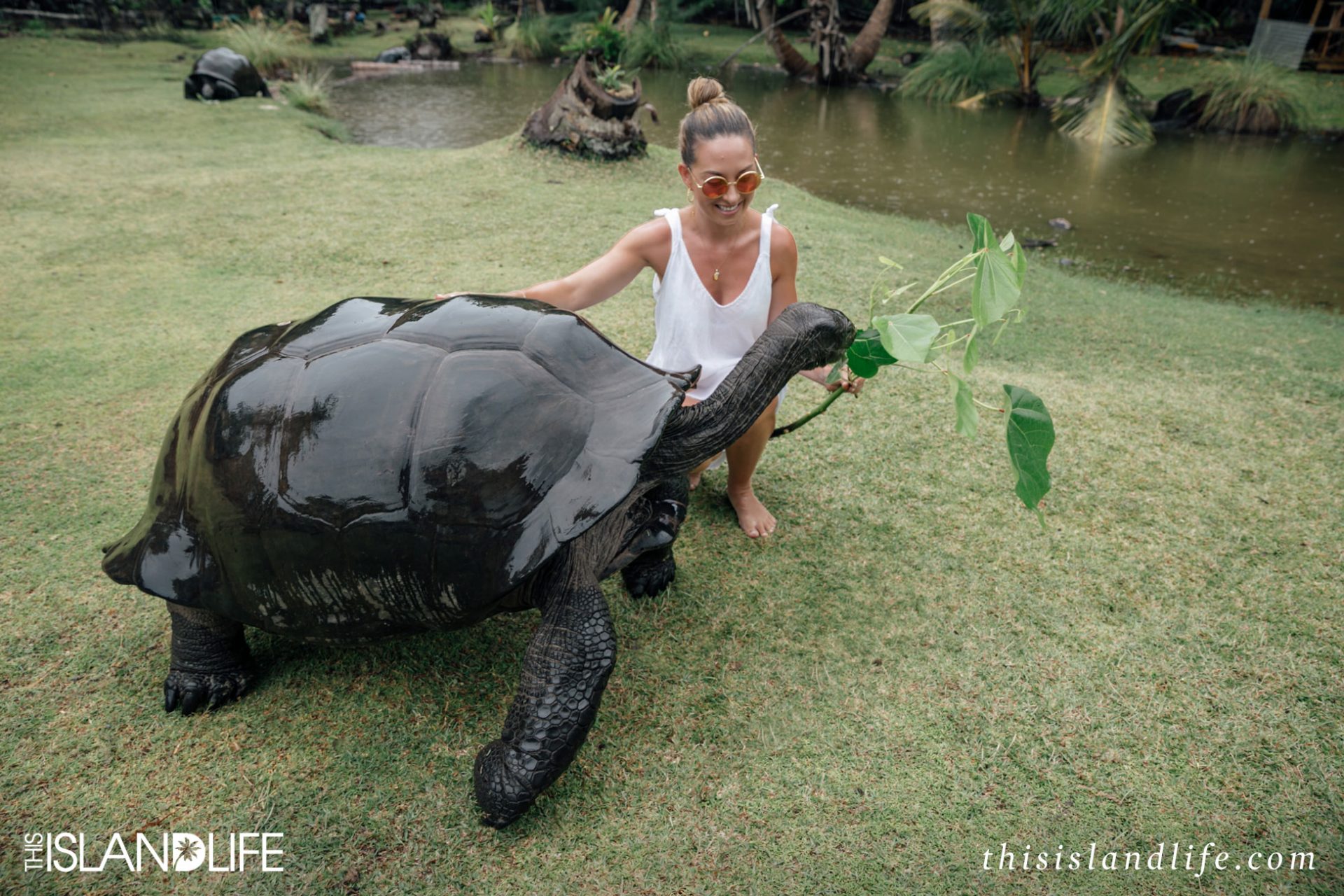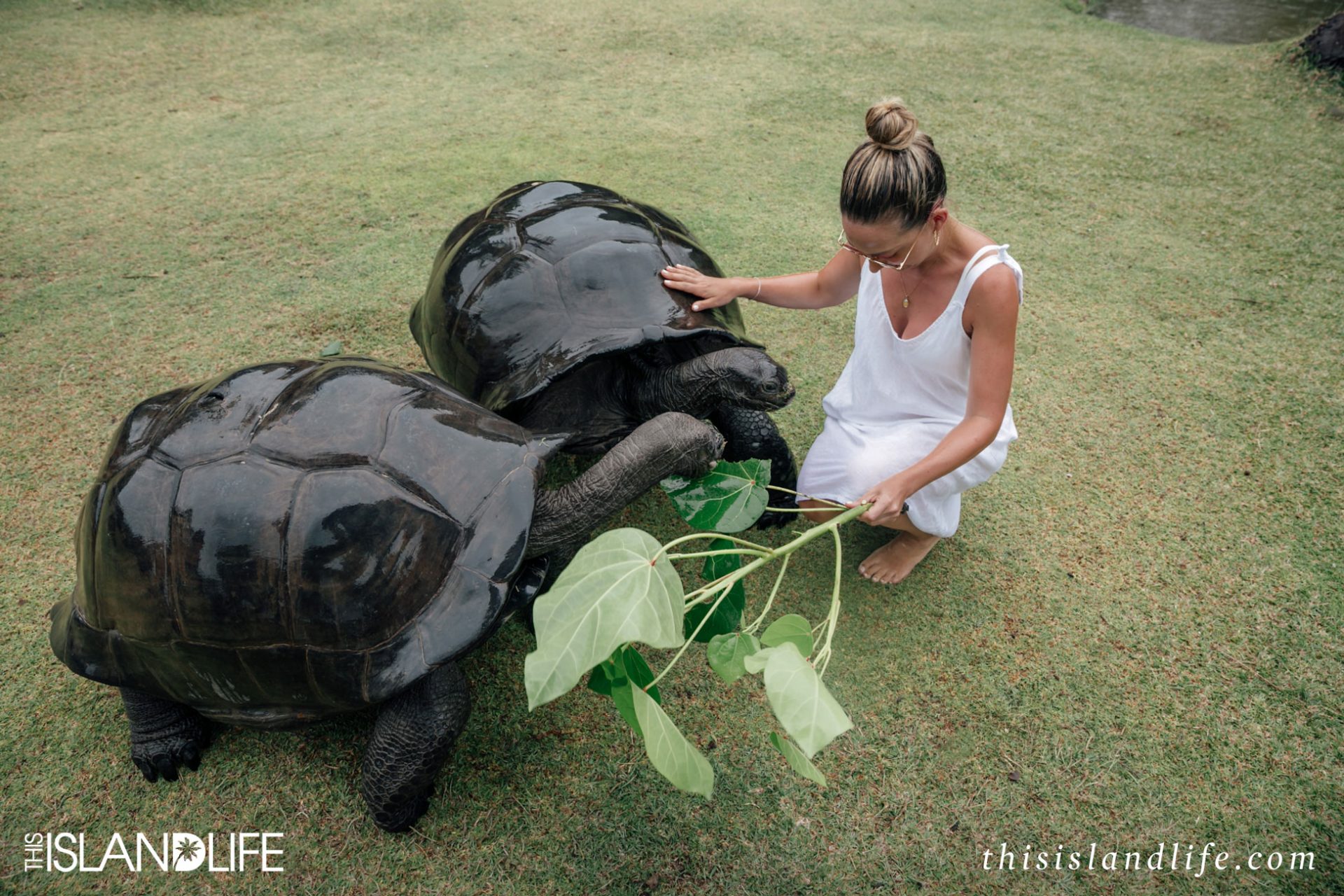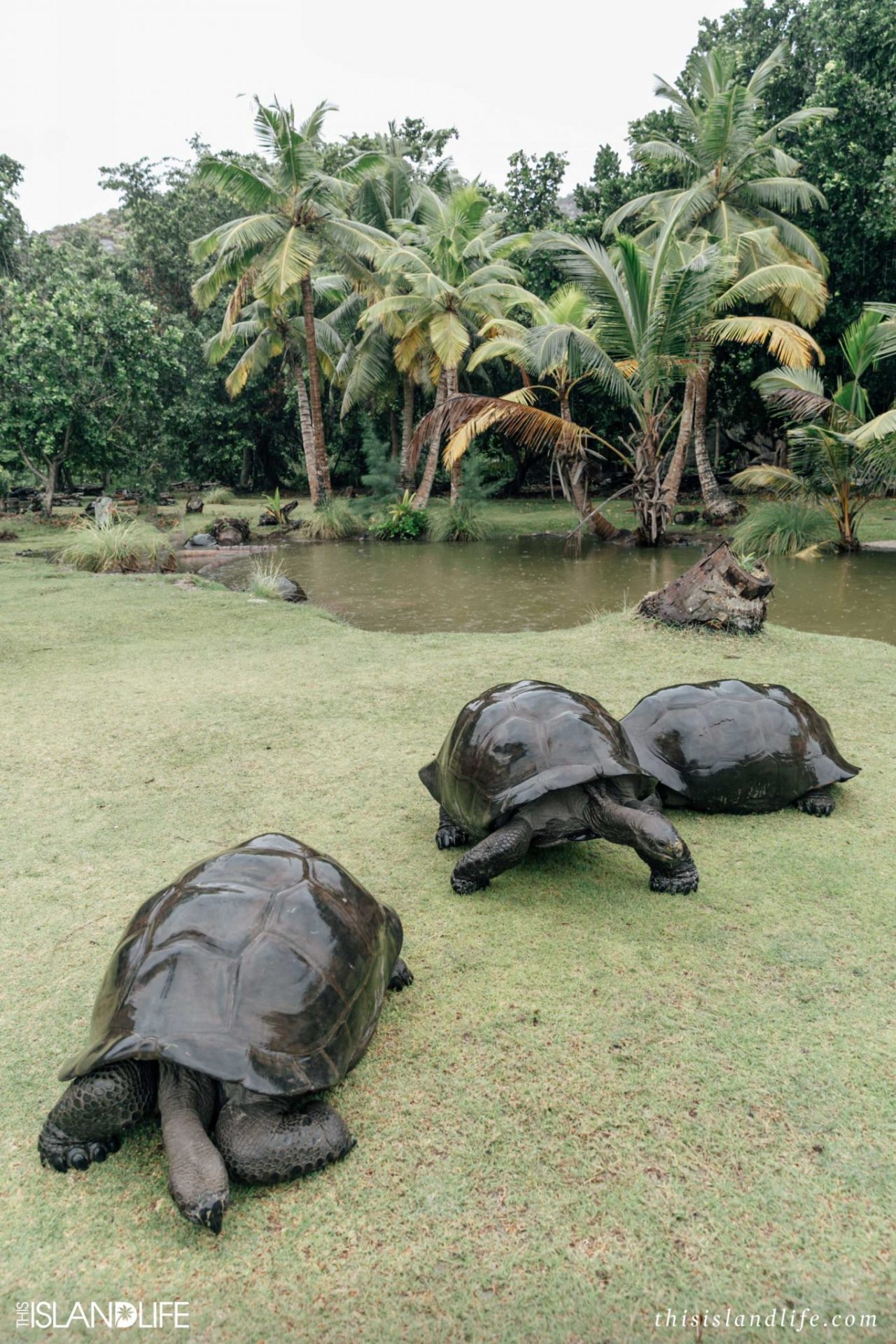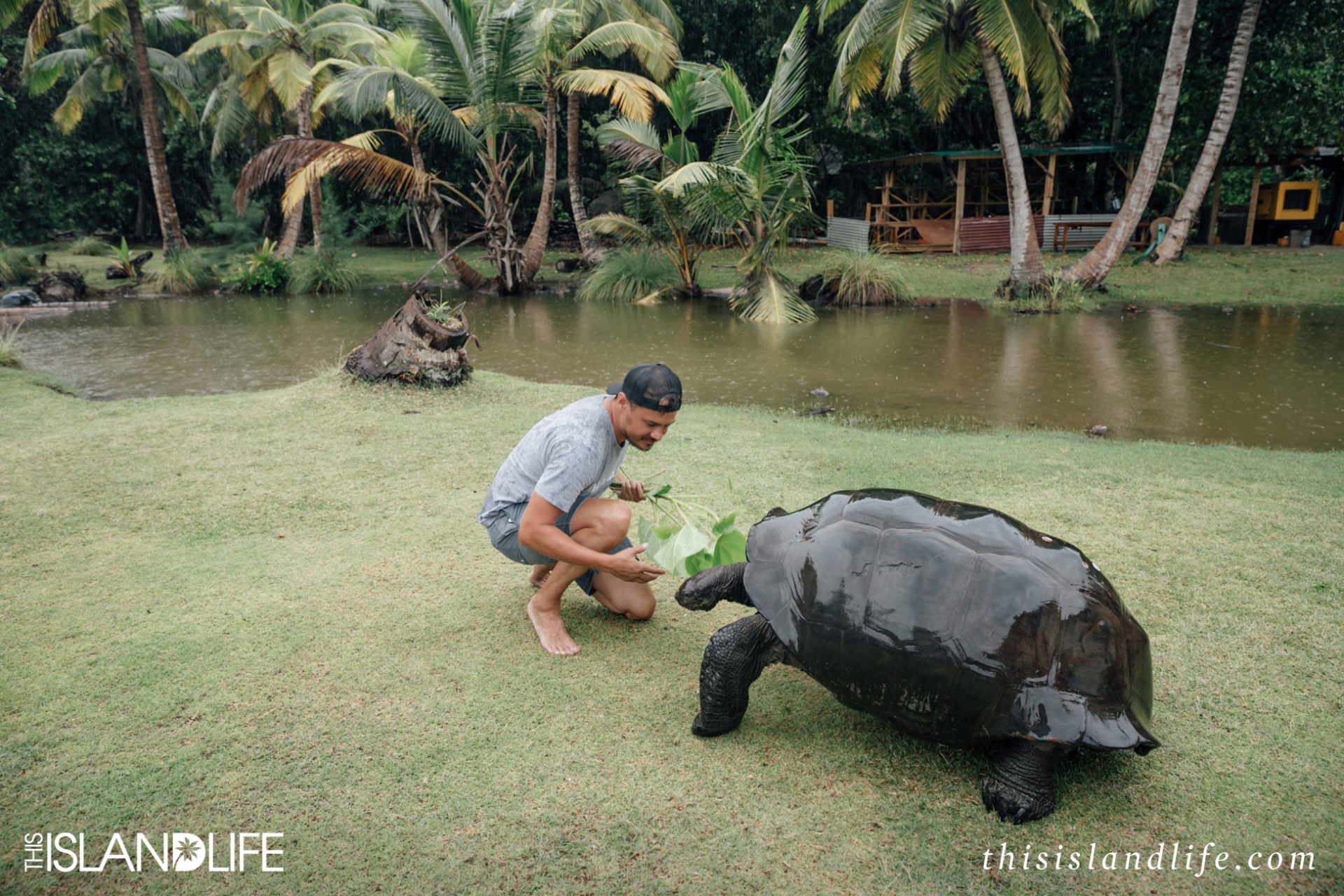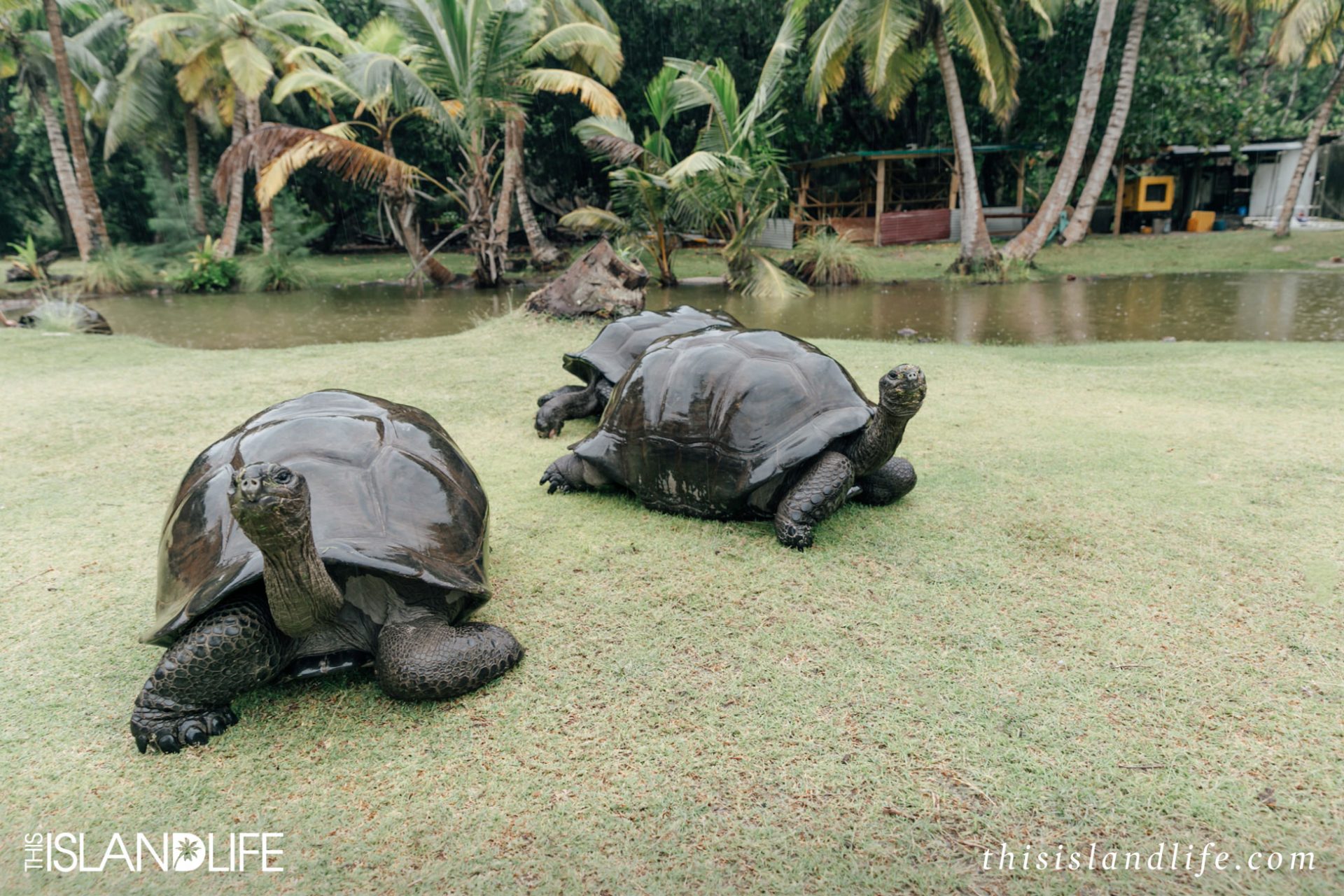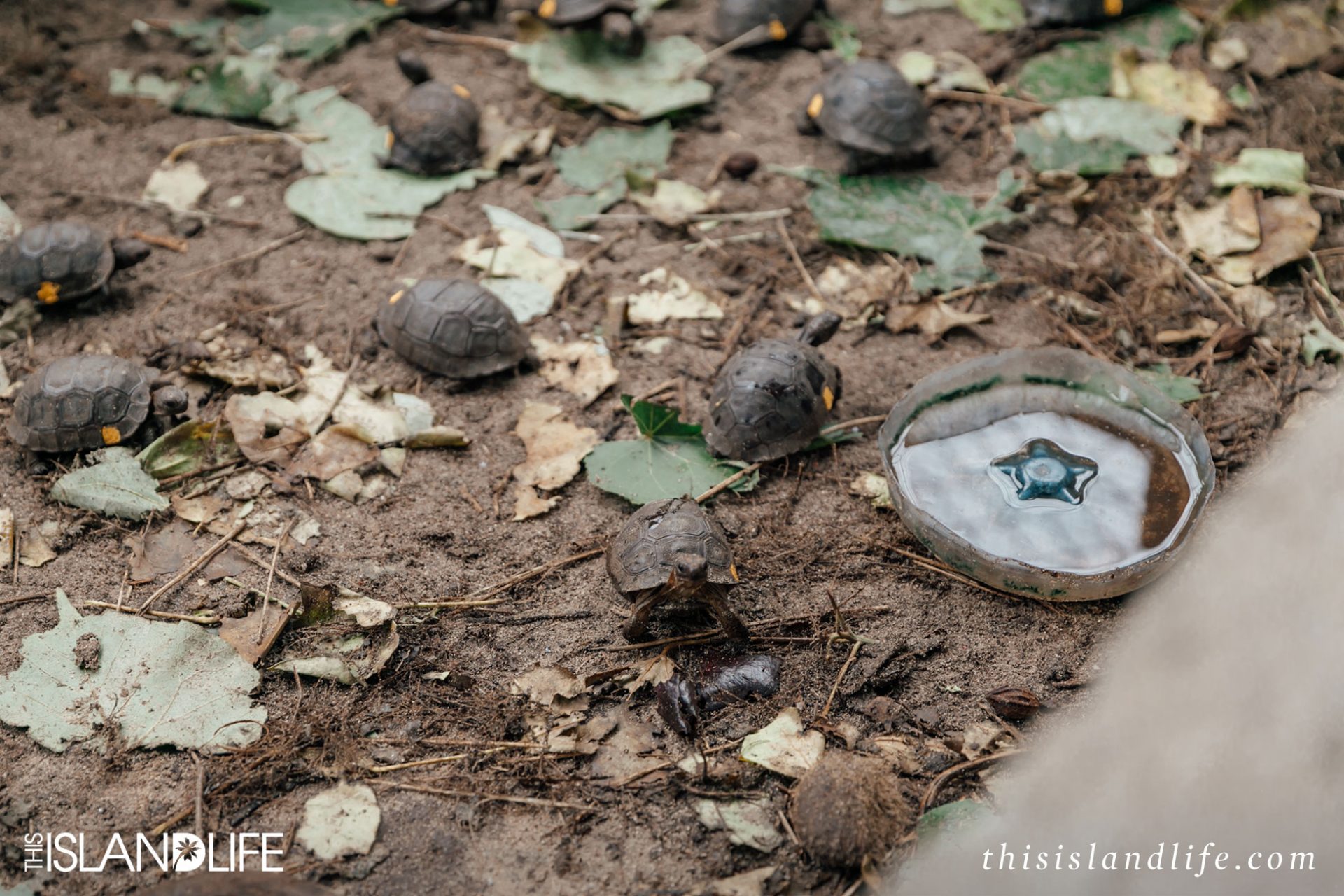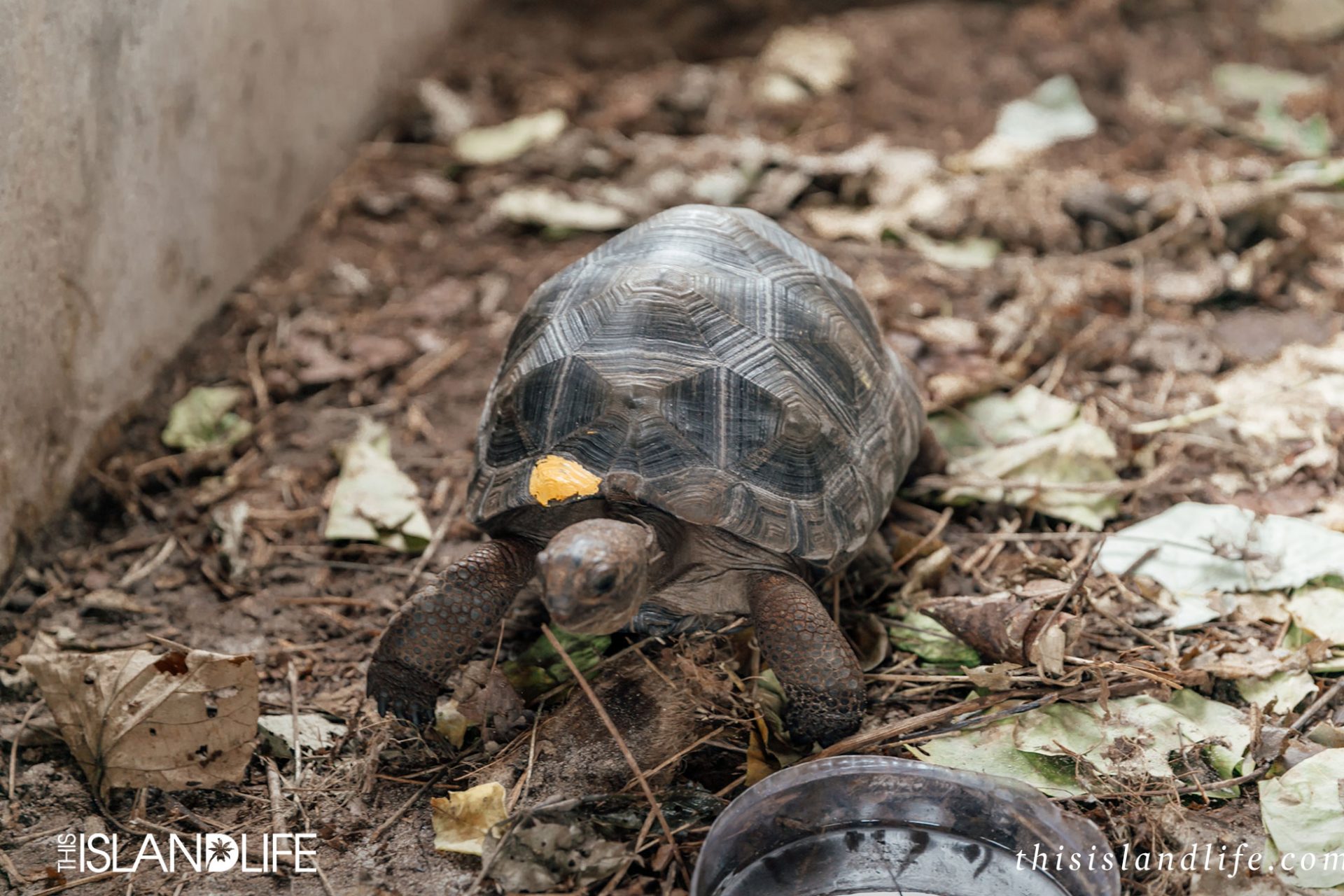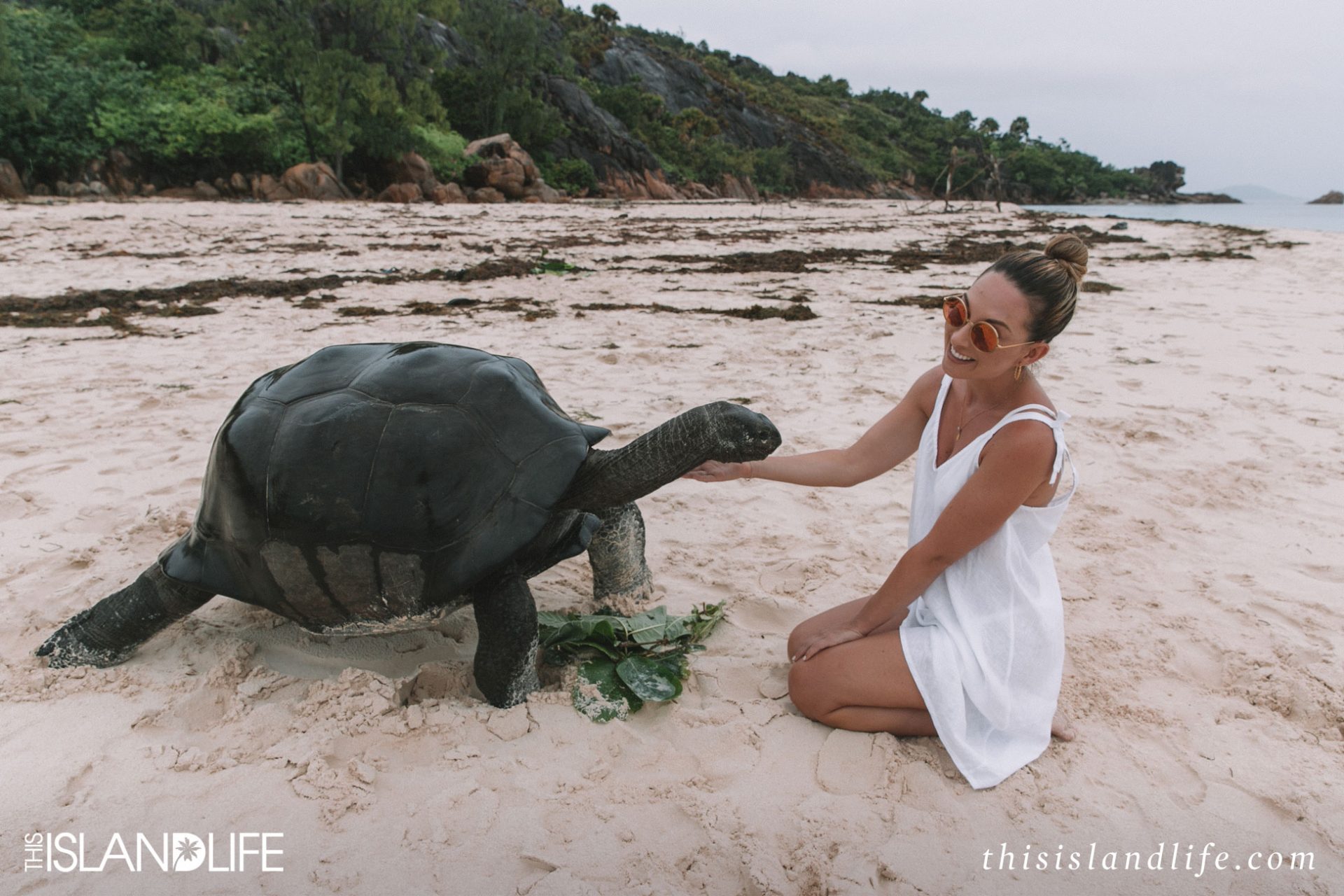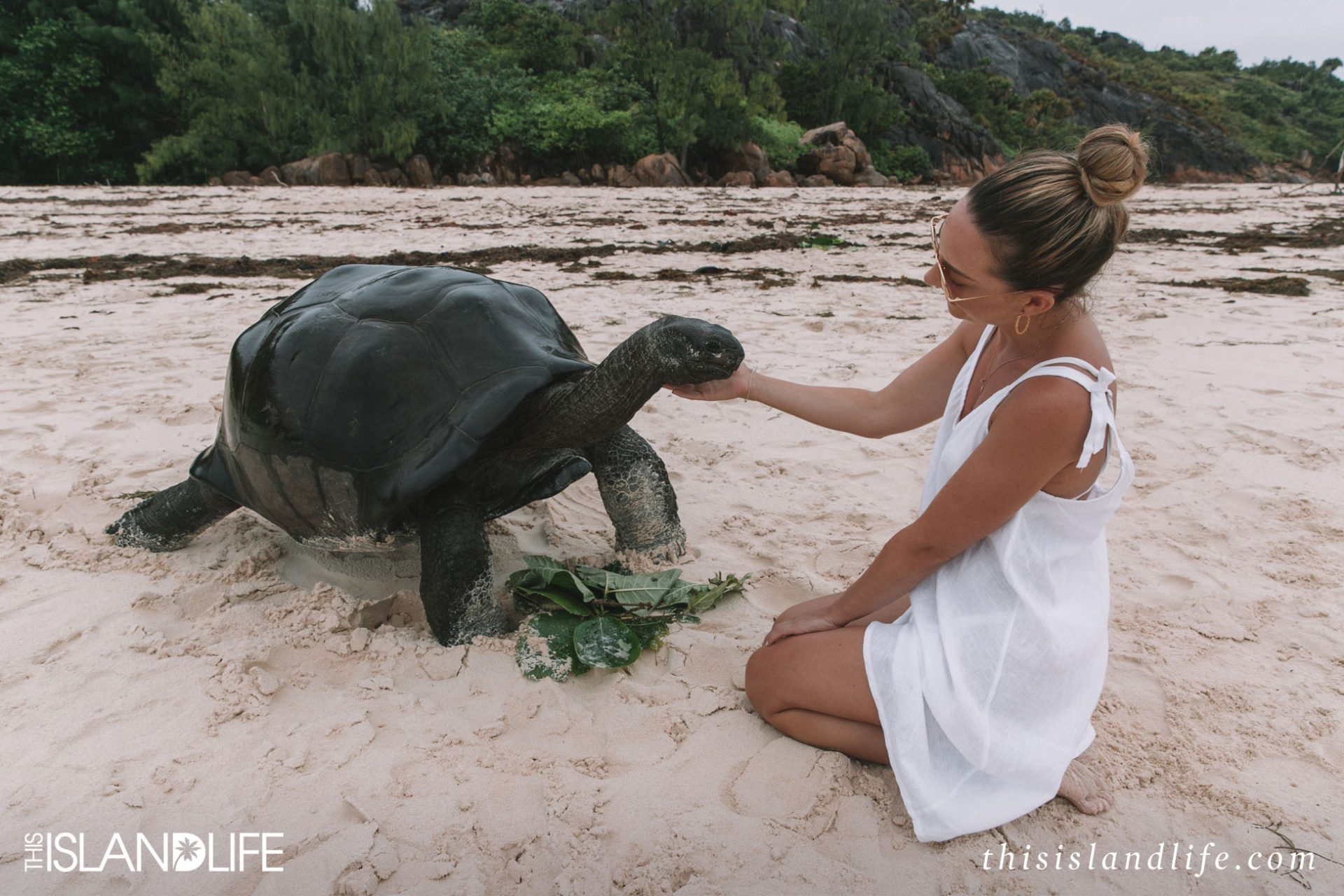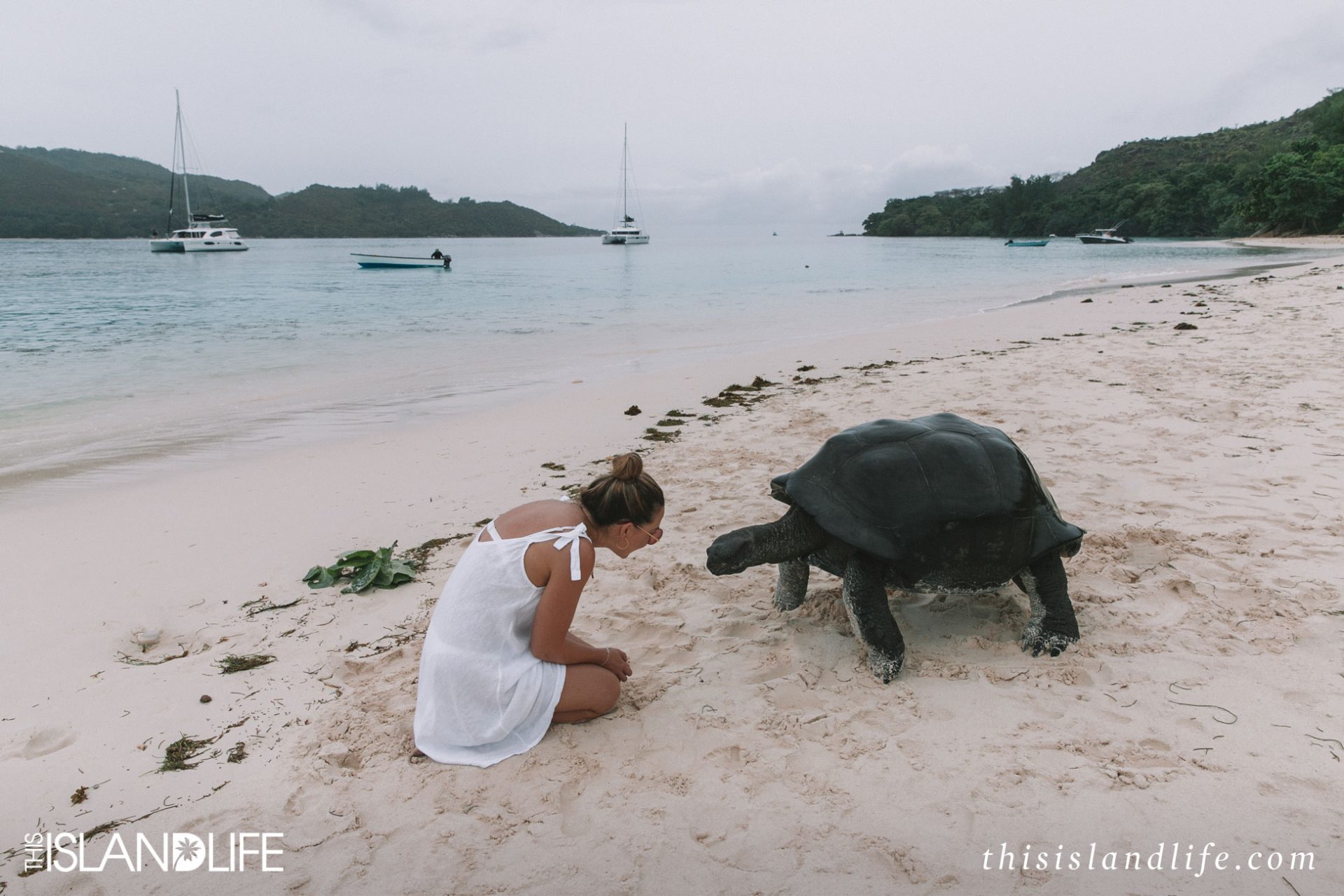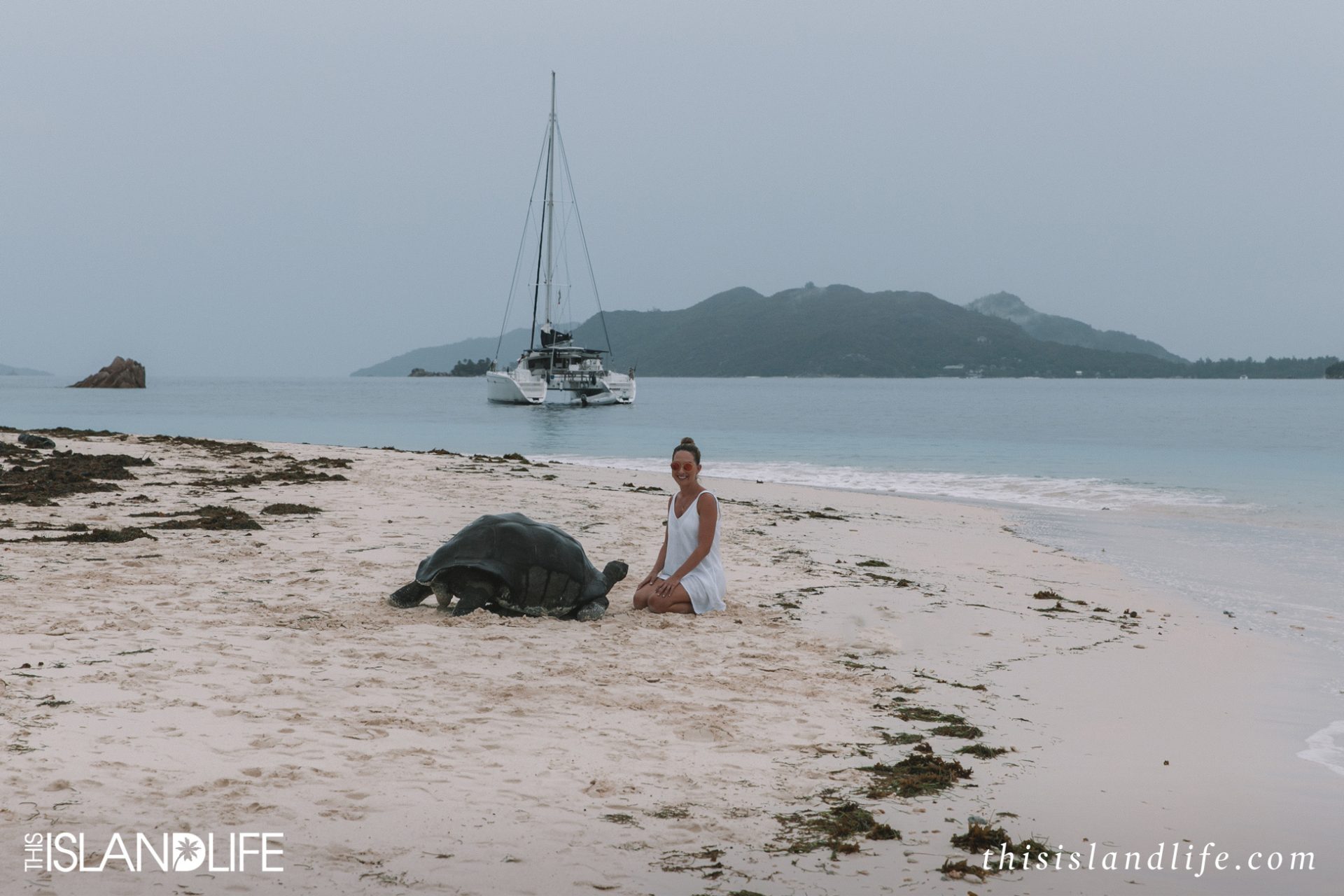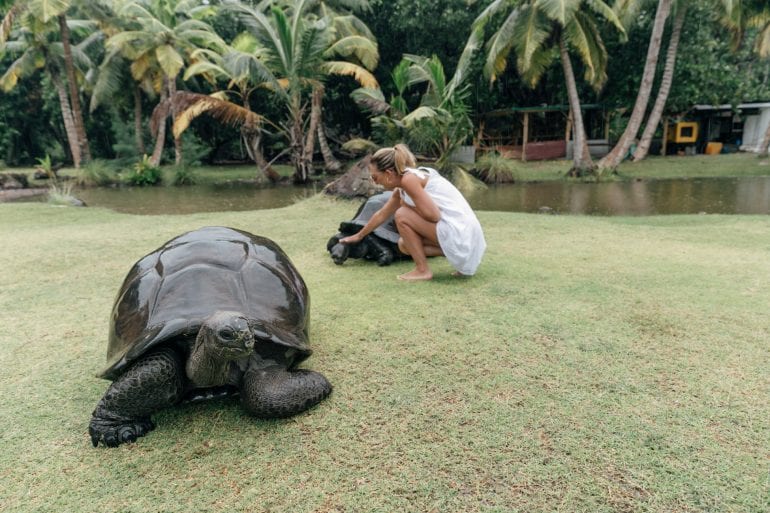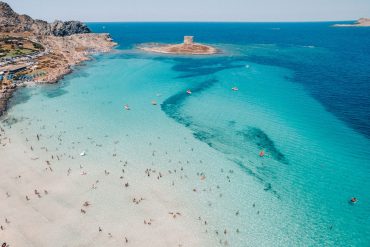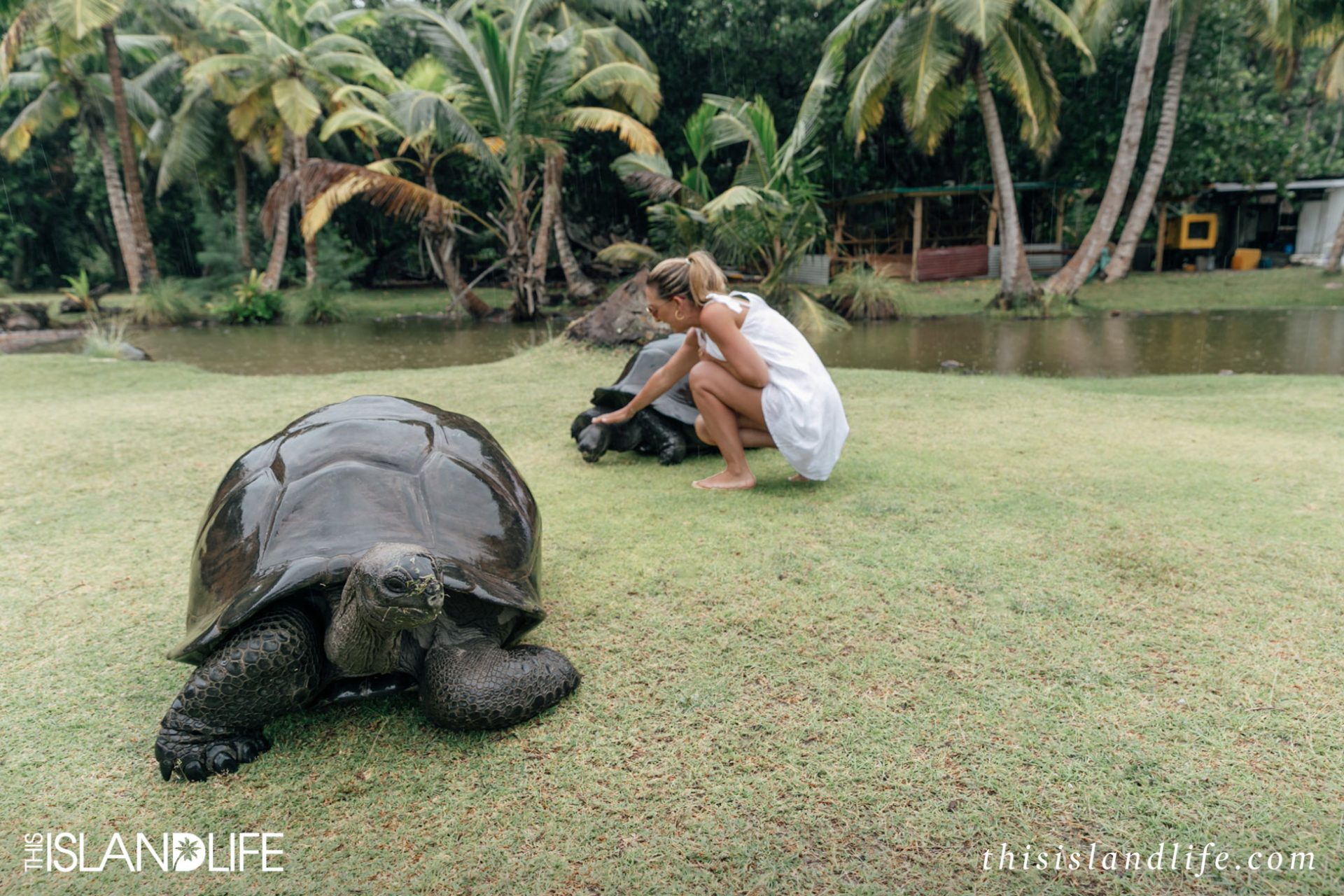
In the India Ocean off the northern tip of Madagascar, lies a string of 115 islands known as the Seychelles. Located amongst these exotic islands is Curieuse – one of the most unique islands on the planet. This tiny granite island is a national park and one of the few places in the world where giant Aldabra tortoises roam wild. Curieuse Island is home to more than 300 of these magnificent reptiles, ranging from super cute baby hatchlings in the nursery, right up to the leathery oldies who were 80 to 120 years old.
These guys aren’t just old, they are also wise. During our time visiting the island, a ranger told us that one day in 2004 the tortoises disappeared. The rangers went to feed them by the beach like they do every night, but the tortoises had left and were heading up into the mountains. No one knew why until a day later when a tsunami hit the island. It’s incredible that they knew the tsunami was coming and ever since then, the rangers monitor their behaviour very closely.
The history of the island
The island’s history is just as fascinating as its inhabitants. In 1829, Curieuse Island became the home of a leper colony and it functioned in this capacity until 1965. This was to help protect the tortoises from poachers and to protect the island’s ecosystem from human influence. The giant Aldabra tortoises aren’t the only thing on the island that the poachers want to get their hands on. The island is also home to the Coco De Mer Palm – a giant prehistoric palm with the world’s biggest seed – a seed that can fetch a hefty price on the black market. The island is now protected by a dedicated group of rangers who are passionate about the conversation of this incredibly unique island.
With a high risk of predators and poaching, baby giant tortoises on Curieuse Island are kept in caged enclosures under tight lock and key. But sadly, that didn’t stop 25 babies being stolen from the island by poachers in 2016. The babies ranged from just a few months old to four years old. It was the first time such a large number of tortoises had been stolen from the island. The theft was a huge loss to the Seychelles National Park Authority and its conservation partners. A few months after the theft, one of the rangers was wandering through the jungle on the island and discovered four baby giant tortoises. The babies were no more than 10 days old, and provided hope that the population of giant Aldabra tortoises can recover.
Our experience on the island
We almost didn’t get to visit this island as the rain was torrential so there were no day cruise boats going out. Luckily, the rain eased off a little and we found a taxi boat driver willing to take us. I’m so grateful he did, because this island, its story and its inhabitants were one of the highlights of my Seychelles trip. And it turns out the wet weather wasn’t necessarily a bad thing. Tortoises love the rain, so they were all out and about when we arrived on the island. We accidentally interrupted a few tortoise ‘moments’. Apparently rainy weather is also baby making weather as it makes the ground softer for laying eggs.
We fed the giant Aldabra tortoises around the ranger’s station, which is where our water taxi dropped us off. The tortoises can only eat the plants at ground level, so the rangers will break off some branches from nearby trees for you to feed them. These leaves are obviously a delicious treat for the tortoises. As soon as they see you holding them, they will start heading towards you (although very slowly). Watch your toes while you are feeding them – these guys weigh up to 250kgs.
We walked through the mangroves for 20 minutes along a wooden boardwalk to the other side of the island. Slowing down to look at the crab habitats, before reaching the ‘Doctor’s House’ – a large restored colonial villa where the island’s doctor lived in the 1870s. There you’ll find a small museum dedicated to the history of leprosy in the Seychelles. We were on the lookout for the island’s oldest tortoise (they can live to 200 years old!) and Captain Morgan – a three-legged tortoise who were both last spotted on the beach. We didn’t find them, but we did find this tortoise (otherwise known as number 14) chilling be the edge of the ocean all alone with no one else around.
These giant creatures may be wild, but they are so friendly and almost like pets. When we left the island, our boat passed number 14 again who was of course still in the same spot. I yelled out and started waving and straight away number 14 popped his head up and watched us until our boat disappeared over the horizon. Bucket list tick.
See more on my Instagram stories highlights under ‘Curieuse Island’.
How to get to Curieuse Island in the Seychelles:
The best way to reach Curieuse Island is from nearby Praslin Island – it takes around 20-30 minutes by boat. There are full day and half day cruise excursions that you can book easily online, through your hotel or tour operators on the island. Most of these tours include a BBQ and stops at neighbouring islands and snorkel spots.
We used Sagittarius Taxi Boat Excursions which is located on the beach next to Paradise Sun Hotel. These guys offer the half day and full day group tours, but there weren’t running on the day we went out. The weather was just too bad. We were so grateful to the guys for agreeing to take us out in the rain.
TIL Tip: Combine your visit to Curieuse Island with a snorkel session at Saint-Pierre Island. The island is tiny with just a few granite rocks and a handful of swaying palms. The island is the perfect illustration of a dreamy tropical desert island. We visited on the way back from Curieuse Island and even in the rain, the tiny island was breathtaking. The waters around the inlet are super clear are teaming with marine life. We couldn’t believe how many fish we saw.
